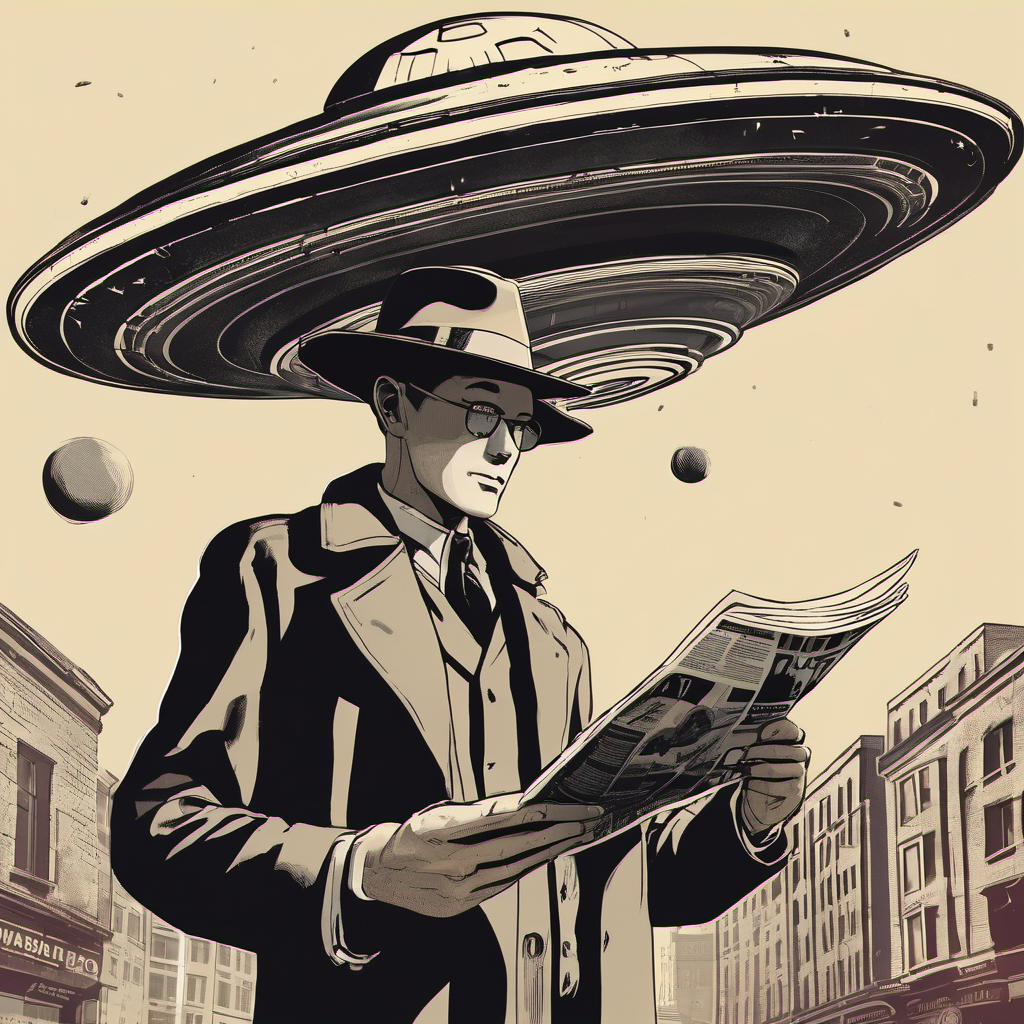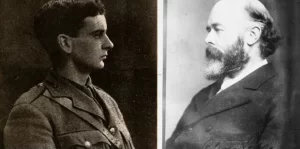
By KEN KORCZAK
SIR OLIVER LODGE was a top-tier scientist of his day.
His legacy stands on the edge of greatness. If he wasn’t in the genius league of, say, a Max Planck or a Michael Faraday, he was a figure of historic significance in the field of experimental physics.
His work with syntonics (we call it “tuning” today) was a key development in the invention of wireless communication and radio. He was later involved in a patent dispute with Guglielmo Marconi over a component essential to the development of wireless transmission, a case which Lodge eventually won.
Lodge was more than a theoretical physicist. He was an applied scientist who created practical, hands-on devices that worked. For example, his research led to a leap forward in the commercial application of spark plugs for cars, leading to the famous British brand, Lodge Igniters, still sold today as Lodge Plugs.
It all makes Sir Oliver a perfect candidate to study the possibility of life after death.
That’s because he can’t be dismissed as just another of what were the flaky New Agers of his day — the spiritualists or occultists who were conducting séances and practicing all sorts of arcane arts, from mediumship and automatic writing to table knocking and Ouija board channeling.
Sir Oliver Lodge was a plodding, detailed oriented researcher intensely focused on hard evidence gained from experimentation and empirical measurement. These honed qualities of the scientist would come in handy for Lodge after his beloved son, Raymond, a promising young engineer, went off to fight the Germans in World War I and was killed in battle.
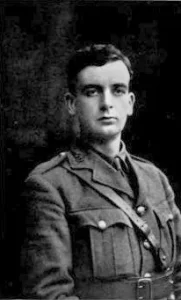
Raymond was just 25.
If he would have returned from war, his future was bright. His excellent grasp of mathematics and natural knack for mechanics all but guaranteed a fulfilling career as an engineer. He was already pursuing that profession at a firm owned by his brothers.
The Lodge family was wealthy and held high social status in Victorian England. Raymond was handsome and charming to boot. Then his life was tossed away in the senseless slaughter of World War I.
Even before Raymond’s death, his father had demonstrated a keen interest in life-after-death issues. He was among the first members of the British SOCIETY FOR PSYCHICAL RESEARCH (SPR). ‘
He helped found it along with other such luminaries as, chemist Sir William Crookes, Nobel laureate Charles Richet and the American “Father of Psychology” William James. The SPR was dedicated to the study of paranormal phenomena.
Because I have read numerous books from this era of burgeoning interest in the occult — especially on séances and survival of death — I was expecting largely “more of the same” from Lodge’s book, RAYMOND OR LIFE & DEATH.
I’m pleased to say I was wrong. I should not have underestimated that esteemed and distinguished gentleman — Sir Oliver Lodge. This book is divided into three parts, only one of which Lodge describes as “supernormal.” The first section represents an ingenious tactic by Sir Oliver. He wants to introduce us to his son, but he also desires readers to know him on a deeper level for the wonderful person he was.
To accomplish this, he lets Raymond do all the talking— that is, Lodge presents us with a selection of letters Raymond wrote while serving on the front lines of Belgium.
The effect is profound.
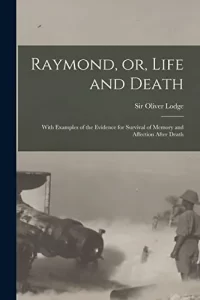 Little by little, letter by letter, Raymond’s delightful personality comes forward. It soon becomes apparent that here was a marvelous young man who was intelligent, kind, brave and modest. We get the sense of a naturally caring and empathetic person.
Little by little, letter by letter, Raymond’s delightful personality comes forward. It soon becomes apparent that here was a marvelous young man who was intelligent, kind, brave and modest. We get the sense of a naturally caring and empathetic person.
Raymond comes across as a curious, enthusiastic and gentle soul who had the misfortune of being thrust into the horrors of war — and yet, he was enduring the gruesome, bloody reality of early 20th Century warfare with uncanny humor and a sunny attitude.
And then — suddenly — a punch in the gut!
We get to the last of Raymond’s letter … and the next page is the report that he died a violent death on the battlefield. For me, the effect was wrenching. It was as if I had just made a new friend — and then, abruptly, he was dead.
The next section of the book is the “supernormal” stuff. Sir Oliver, his wife Lady (Mary) Lodge and his sons and daughters embark on an intense effort to develop contact with the spirit of Raymond. (The Lodges had 12 children).
This effort is conducted through the agency of mediums, one of which was the controversial GLADYS OSBORNE LEONARD. Several other mediums were engaged as well, including a certain prominent “Mrs. Kennedy of London, wife of Dr. Kennedy.” She was a medium but also apparently a gifted automatic writer.
An initial contact with Raymond came from overseas by way of one of the most scientifically examined and tested mediums in history — LENORA PIPER of New Hampshire. She was deemed “authentic” by William James and British researcher Richard Hodgson who subjected her to hundreds of tests controlled by rigorous scientific protocols.
Another frequent method of afterlife communication studied by Sir Oliver was “table tilting.” This is a fantastically tedious method in which séance sitters place their hands flat atop a small table — and sort of Ouija board style — they ask for contact with the spirit world.
Then they ask specific questions once a presence on the “other side” is indicated by certain movements of the table. Even though hands are touching the table, the belief was that movements of the table were being initiated by the spirits and not the involuntary hand movement of the participants.
The attendees ask a question. If it is a “yes or “no” question, the table tilts three times to indicate “yes” and one time to indicate “no.”
But the laborious part begins when they want the spirit to spell out answers to open-ended questions. In this case, the medium or séance leader asks a question, such as, “What is your name?” She then begins to call out the letters of the alphabet.
Let’s say the spirit’s name is “Paul.” When the facilitator gets to the letter “P” the table tilts to indicate a “stoppage” for that letter. Then they start repeating the alphabet from the beginning. It will tilt again at “A” then at “U” and then at “L” — and so they get the name “Paul” after having to go through the alphabet from the beginning each time.
Of course, skeptics shovel scorn upon all this. They think it’s obvious that the people placing their hands on the table are the ones doing all the tilting, albeit through involuntary muscle control. This is the same skeptic’s explanation given for the action of the Ouija board. It’s called the ideomotor effect or ideomotor phenomenon.
Sir Oliver readily acknowledges that involuntary muscular control may offer a partial explanation for the table tilting phenomenon. However, he writes:
“Unconscious guidance can hardly be excluded … but first, our desire was rather in the direction of avoiding such control; and second, the stoppages were sometimes at unexpected places; and third, a long succession of letters soon becomes meaningless. Except to the recorder who is writing them down silently as they are called to him in another part of the room.”
In short, Sir Oliver comes away from many hours of table tilting study concluding that:
“Table tipping is an incipient physical phenomenon and that though the energy comes from the people … it does not appear to be applied in quite a normal way.”
Again, skeptics howl with ridicule at this. And yet, there is much more to table tipping. During these sessions, the table was often experienced to levitate. A table could also demonstrate varieties of other movements and indications, including moving or “walking” across a room. Participants stayed at the table all the time with their hands flat on top.
In one extraordinary chapter, Sir Oliver’s wife, Mary, describes a session during a social gathering at the Lodge family manse, Mariemont. An impromptu decision was made to place hands on a table to see if Raymond was present. The table indicated that he was. With hands positioned flat on the table, it walked around the room and at several points, levitated.
Mary Lodge writes:
“I took one hand off (the table) leaving one hand on top, and Honor’s (Oliver and Mary’s daughter) two hands lying on the top, no part of them being over the edge, and I measured the height the legs were off the ground. The first time it was the width of three fingers, and the next time four fingers … I tried to press it down but could not — a curious feeling, like pressing on a cushion of air.”
When someone began playing the piano, the table edged its way over and began to tap against the back of the player in time with the music. This motion was so vigorous that the table tilters found it necessary to place a pillow between the player and the table to cushion the action of the table.
And so — by way of mediums speaking in trance, table tipping and automatic writing — Sir Oliver Lodge and his family became convinced that Raymond survived death. This determination was made through a lot of questioning, including “test questions,” which ask for information that only those who were intimate with Raymond could have known.
Raymond’s brothers would ask about small, incidental things that happened only among themselves. For example, on a particular automobile outing one day, the muffler of their car was damaged going down a hill. Raymond, speaking through a medium, described the incident. The medium could not have known anything about it.
Initially, and in many cases, they selected mediums that were total strangers so he/she could have had no foreknowledge of or about the spirit he/she was channeling for the “sitter.” The Lodges eventually flesh out the details of what life is like for Raymond on the other side. They ask about his environment, what his world is like, where and how he is living “over there.”
 Raymond calls his location “Summerland,” an idyllic Earth-like environment that is just as solid as our physical existence here on earth. He even said he lived in a cottage constructed of bricks.
Raymond calls his location “Summerland,” an idyllic Earth-like environment that is just as solid as our physical existence here on earth. He even said he lived in a cottage constructed of bricks.
There are lots of other people there, buildings, towns and special halls that are like universities where they study advanced topics, and so forth.
But this picture develops slowly. Initially, Raymond’s perception and reports come across as being more dreamlike. Things shift and change at the whim of one’s thoughts.
It seems analogous to what it’s like when we are experiencing a vivid dream, or perhaps a lucid dream. As Raymond gets more acclimated to his new situation, he gains solid footing in the afterlife realm. It can be as firm and earth-like as he wants it to be, but it doesn’t necessarily have to stay that way.
It’s a matter of creating or projecting one’s own virtual reality based on one’s thoughts, choices, perception, creativity and more. Raymond takes on the afterlife role of a “Helper” in his transformed existence. That is, he assists in the orientation of other people as they die and enter the afterlife realm. Business is brisk because of the war.
Raymond expresses his profound gratitude to other special guides who took him under their wings (so to speak) and helped him to become oriented and acclimated to his exotic new afterlife environment. Apparently, it takes a while to clear out the cobwebs and come to grips with the fact that one has shed the physical form and is now living in another, more etheric kind of body in a more fluid realm — yet a place that can be every bit as solid and “real’ as was life on the earthly plane.
Raymond comes to think of his former physical body as, “an old coat I have shed and no longer need or care about.” In addition to his role as a Helper, Raymond is eager to work with his father to prove that there is no death. In fact, he says this work is extremely important. Raymond proclaimed it vital that living people on earth understand that life goes on and in a way that it is even better than physical life on earth, though It’s not a final, idyllic paradise or heaven.
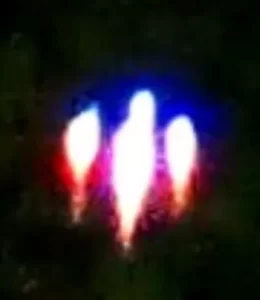
People, or souls, must continue onward with new challenges to learn, grow and strive to move higher up the ladder of consciousness and existence. Raymond tells amazing stories of meeting advanced beings that have transcended to loftier levels of existence. They sometimes “came down” to his level to teach and encourage the recently dead to work toward advancement so that they, too, could move on (and up) to more sublime realms.
And there’s a lot more. We get numerous, tantalizing glimpses about life on the other side of death as reported by Raymond — although transmitted imperfectly caused by a certain amount of garbled translation. After all, the information is filtered through the brains of mediums, table tilting and automatic writing.
The third part of the book is a series of essays by Sir Oliver. They are part scientific theory, part philosophy and part opinions formed through his years-long study of the supernormal phenomena and communications with the departed.
They’re well worth reading. I came away with the impression that Sir Oliver was a man ahead of his time, especially in terms of challenging the established, mainstream scientific community for its pervasive unwillingness to consider a study of life after death as legitimate inquiry because of hardened, preconceived notions of what is deemed to be “real” and what is not.
Sir Oliver believed that science had become mired in a narrow box of limited belief systems similar to that of religious fundamentalists. Scientists, like religious dogmatists, refuse to accept anything outside of their own articles of faith-based on unquestioning “belief.”
Sir Oliver Lodge endured withering criticism from his distinguished peers for his courage to look directly at the issue of life after death. They derided his willingness to tackle it with the same methodologies he used to study the physics of electricity. He was adept at giving back as good as he got, however, making his case through his eloquent essays and measured responses. He never devolves to pointless bickering or making bitter reprisals against his detractors.
In every respect, Raymond or Life & Death is a remarkable work by a great man, a driven scientist and a courageous thinker.
NOTE: For more stories about the After Life and surviving death, please see: KEN-ON-MEDIUM.
